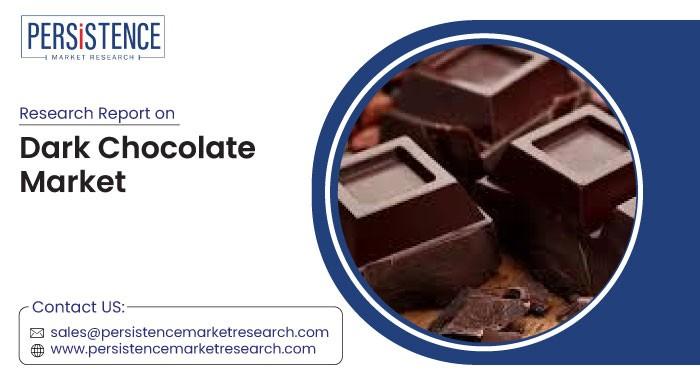Dark Chocolate Market: Consumer Perceptions and Market Growth
The dark chocolate market is experiencing a significant transformation, with global consumer perceptions evolving to align with new tastes, health trends, and ethical considerations. According to the Persistence Market Research report, the global dark chocolate market is projected to reach USD 52.3 billion by 2025, and further grow to USD 86.2 billion by 2032, with a compound annual growth rate (CAGR) of 7.4%. This robust growth highlights the increasing appeal of dark chocolate worldwide, driven not only by its indulgent flavor but also by its perceived health benefits, premiumization, and ethical sourcing. In this blog, we explore how consumer perceptions are shaping the dark chocolate market and the key factors driving its growth.

1. Changing Consumer Perceptions of Dark Chocolate
Historically, dark chocolate has been perceived as a niche product, primarily enjoyed by connoisseurs or those who appreciate its more intense, less-sweet flavor. However, in recent years, the global perception of dark chocolate has undergone a significant shift. Once considered a bitter and acquired taste, dark chocolate is now widely regarded as a healthier and more sophisticated alternative to milk chocolate and other sweet treats. This transformation is largely due to growing consumer awareness of the health benefits associated with dark chocolate.
One of the key drivers of this change in perception is the increasing demand for healthconscious food choices. Consumers are more informed than ever about the impact of sugar on their health and are seeking alternatives to sugary confections. Dark chocolate, with its higher cocoa content and lower sugar levels, is seen as a more nutritious option that offers antioxidants, minerals, and potential heart-health benefits. As a result, dark chocolate is no longer limited to a small, niche audience but has expanded into the mainstream as a healthier indulgence.
Moreover, the growing popularity of dark chocolate aligns with the broader wellness movement, which emphasizes clean eating, mindfulness, and products that contribute to overall well-being. Consumers now view dark chocolate not just as a treat but as a functional food that can enhance their lifestyle. The combination of rich taste and perceived health benefits has
Moreover, emerging markets in Asia-Pacific and Latin America represent untapped potential for the dark chocolate industry. As disposable incomes rise in these regions and consumers become more aware of the health benefits of dark chocolate, demand is expected to increase. Companies that can adapt their products and marketing strategies to meet the unique tastes and preferences of these markets will be well-positioned to capitalize on this growth.
Conclusion
Consumer perceptions of dark chocolate have evolved significantly, with health benefits, premium quality, and sustainability now at the forefront of consumer preferences. As the global dark chocolate market expands, companies must remain agile, responding to changing consumer demands and maintaining a commitment to ethical sourcing and product innovation. With a projected market value of USD 52.3 billion by 2025 and a CAGR of 7.4%, the dark chocolate market offers substantial growth potential for companies that understand the evolving landscape and cater to the preferences of today’s health-conscious, ethically-minded consumers. Whether through product innovation, sustainability efforts, or expanding into emerging markets, the future of the dark chocolate market looks promising, with significant opportunities for both established brands and new entrants.
